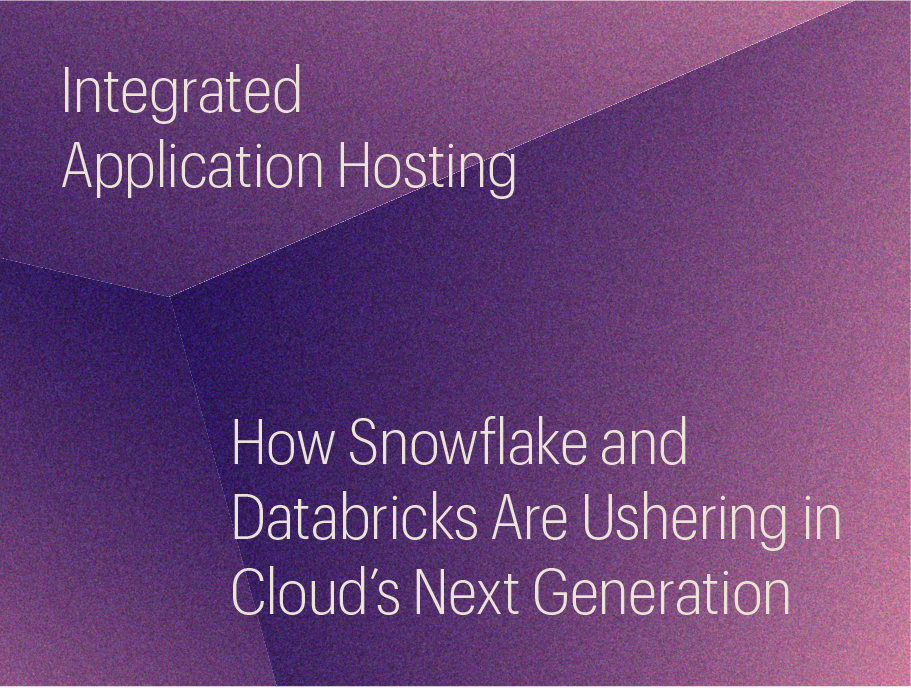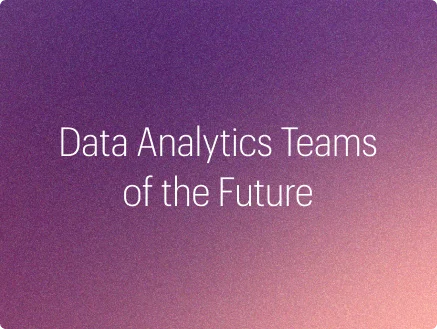Picture this: A data showdown in the cloud arena. Two titans step into the ring, each eyeing the championship title of the ultimate Data & Analytics platform. In one corner stands Snowflake, the smooth operator of data engineering, a crowd favorite known for its simplicity and user-friendly design. In the other corner, we have Databricks, a fearless machine-learning and data-engineering powerhouse with unmatched versatility and innovation.
With years of experience working alongside Fortune 500 companies, we have seen these heavyweights go toe-to-toe in the real world. Now, it is time to break it down round by round to determine which contender packs a punch to dominate the data arena. Buckle up, it is going to be a fight worth reading.
Round 1: Platform Features
Databricks: Flexibility Meets Innovation
Databricks stands out as a versatile platform, offering a wide range of applications powered by its comprehensive and robust feature set, which includes:
- Flexibility Across Use Cases: Whether it is ML, DE, or the emerging world of GenAI, Databricks adapts seamlessly.
- Proprietary Model Execution: Databricks allows users to run their own models, adding a layer of customization.
- Delta Sharing: An open-source feature for data sharing, ensuring no vendor lock-in and promoting interoperability.
- Cost Efficiency with Serverless Support: Databricks’ serverless architecture helps optimize costs without compromising on performance.
- Unity Catalog: A comprehensive data governance solution that simplifies metadata management.
However, Databricks has its limitations:
- It can become expensive for extensive workloads, especially when scaling clusters for large data processing tasks.
- Unity Catalog, though promising, is still maturing in its capabilities.
Snowflake: Simplicity and Focus
Snowflake’s claim to fame is its simplicity and focus on data engineering, paired with user-friendly functionality. Key features include:
- Ease of Use: A simpler UI makes it accessible for teams of varying expertise.
- Automated Indexing and Clustering: Reducing manual intervention while enhancing performance.
- Detailed Query Execution Insights: Visibility into query plans helps users optimize performance.
- Snowflake Marketplace: A one-stop shop for hosting applications and accessing datasets.
- Snowpark: Native support for ML libraries, enabling data scientists to work within the platform.
Despite its strengths, Snowflake is not without its drawbacks:
- Limited support for unstructured data: It is less suitable for workloads involving images, audio, or video.
- Latency issues: It is less effective for real-time analytics due to its batch-oriented architecture.
Verdict
Round one is a close call. Databricks scores high for flexibility and advanced use cases, while Snowflake takes the lead for simplicity and ease of use.
Round 2: Supported Ecosystem
The supported ecosystem determines how well a platform integrates into a broader data and analytics landscape. Snowflake and Databricks both have their strengths, but their approaches highlight key differences in usability and compatibility.
Databricks: Built for Flexibility and Customization
Databricks boasts a robust ecosystem designed to cater to a variety of data engineering, machine learning, and custom use cases. Here is what sets it apart:
- Language and API Support: Databricks supports multiple languages and APIs, providing flexibility for developers.
- Custom Use Cases: The platform is particularly adept at enabling niche, custom solutions, enhancing its ecosystem’s strength.
- Orchestration Capabilities: Unlike Snowflake, Databricks inherently supports orchestration, reducing the need for external tools.
- Acquisitions: Databricks has expanded its ecosystem through strategic acquisitions, such as its move into Iceberg-driven table formats by acquiring Tabular.
That being said, there are challenges as well:
- The Databricks Marketplace, while present, is not as mature or feature-rich as Snowflake’s.
- Connectors for Databricks are not always readily available, creating friction when integrating external systems.
- Interconnecting systems often requires additional steps, adding complexity.
Snowflake: A Well-Rounded Ecosystem
Snowflake’s ecosystem is lauded for its simplicity and broad compatibility, making it a go-to for enterprises seeking ease of integration. Key strengths include:
- Cloud Agnostic: Full support for AWS, Azure, and GCP, with Azure offering better cost management than GCP.
- Developer Interaction: Tools like SnowSQL, console support, and compatibility with all major languages and drivers make it developer-friendly.
- CI/CD Integration: Snowflake enables seamless CI/CD without requiring additional resources.
- Vendor Lock-In Avoidance: Snowflake’s open architecture allows for easy migration and flexibility.
- Compatibility with IDEs: Snowflake’s ecosystem integrates seamlessly with popular Integrated Development Environments.
- Partner Ecosystem: Snowflake’s marketplace offers a strong lineup of applications and datasets, streamlining partnerships.
However, Snowflake has its limitations:
- Reliance on Iceberg for open table formats: It lags behind Databricks, which has enhanced its capabilities with the acquisition of Tabular.
- Dependence on external orchestration: It results in higher costs compared to Databricks’ built-in orchestration features.
Verdict
Snowflake takes the lead for ecosystem maturity, while Databricks claims the edge for flexibility and customizations.
Round 3: Fit for Use Cases (Ingestion/Transformation, Advanced Analytics, AI)
When evaluating cloud platforms for specific use cases, understanding their strengths in data ingestion, transformation, advanced analytics, and AI capabilities is crucial.
Databricks: A Holistic, AI-Friendly Approach
Databricks aims to be a one-stop shop for diverse data needs, particularly excelling in transformation and advanced analytics. Key strengths include:
- Holistic Solution: Databricks appeals to customers seeking an end-to-end platform for data engineering (DE), analytics, and AI.
- Transformations: With robust tools like Delta Live Tables for real-time data processing and Change Data Capture (CDC), Databricks simplifies transformations.
- Governance: The Unity Catalog provides lineage tracking and quality checks, making governance easier for small-to-medium customers.
- ML and AI Capabilities: Integration with MLflow, Lakehouse monitoring, and AI agents positions Databricks as a strong player in machine learning and artificial intelligence.
- Streaming Support: Tools like Spark Structured Streaming offer real-time data processing capabilities.
Databricks has limited integration options for some advanced use cases.
- While Spark Structured Streaming is a key feature, its use cases remain limited.
- Replication and CDC are harder to implement compared to alternatives.
Snowflake: Scalable and Versatile
Snowflake offers a scalable solution tailored for diverse data engineering use cases while also supporting advanced analytics and AI workflows. Key strengths include:
- Variety of Use Cases: Snowflake is designed to support low, medium, and advanced DE, ML, and even product use cases.
- Compute and Storage: Efficient handling of both resources is a key selling point for the platform.
- Partner Ecosystem for Transformations: While transformations are often offloaded to external tools, this approach allows Snowflake to remain lightweight and adaptable.
- Native App Creation: Snowflake supports the development of native apps for DE, ML, and product use cases, backed by Snowflake Notebooks and Snowpark Pandas API.
- Heavy ML Models: Snowflake can deploy and manage heavy ML models effectively.
Snowflake has certain limitations as well:
- Advanced analytics is more complex and harder to execute on Snowflake than on Databricks.
- Limitations exist for native app development.
Verdict
Databricks dominates in ML and AI, delivering a unified platform for advanced analytics and real-time processing. Meanwhile, Snowflake excels in scalability, accommodating a wide range of use cases with robust storage and computing power.
Round 4: Platform Cost and Total Cost of Ownership
When it comes to cost management, Databricks and Snowflake take different approaches, each with unique strengths and challenges.
Databricks: Flexibility with Long-Term Savings
Databricks champions scalability and adaptability, especially for organizations aiming to optimize costs over time.
- Delta Lake Advantage: Databricks reduces storage and processing costs in the long run, making it a strategic choice for scaling operations.
- Compute Options: Databricks provides a wide range of resources, ensuring better flexibility for diverse workloads compared to Snowflake.
- Open-Source Ecosystem: Many Databricks features, such as Delta Sharing, are open-source, enabling users to retain these tools even if they move away from the platform.
- Lower Operational Overhead: Databricks minimizes the need for excessive operational layers, which can increase costs in competitive platforms.
However, Databricks faces a few challenges in managing cost and scalability.
- Time to Switch: Transitioning away from Databricks can be a time-intensive process.
- Cost Monitoring: Snowflake’s credit system offers a more granular view of cost breakdowns, which Databricks lacks.
Snowflake: Transparent and User-Friendly Costs
Snowflake focuses on cost clarity, offering tools and pricing models that promote governance and ease of use.
- Credit-Based System: Snowflake is a pay-as-you-go model, and the credit system provides clear tracking of compute and storage usage.
- Cost Monitoring: Snowflake’s dashboarding tools offer granular insights into usage, tying costs directly to users and processes. This helps organizations analyze inefficiencies, such as queuing, and optimize operations.
On the downside, Snowflake also has its own set of challenges.
- Scaling Limitations: Snowflake may be more restrictive when scaling for dynamic workloads, potentially limiting flexibility for certain use cases.
Verdict
Databricks proves to be a solid choice for organizations prioritizing long-term scalability and cost efficiency. Snowflake scores in cost governance, delivering unmatched transparency, flexibility, and easy expense monitoring.
Now, with four intense rounds behind us, which platform will claim the ultimate crown?
Conclusion – The Final Bell
Both Databricks and Snowflake bring their unique strengths to the table. Databricks excels as the go-to choice for machine learning and advanced analytics, empowering innovation. Snowflake stands out with its simplicity and cost-effective solutions, tailored for streamlined analytics and budget-conscious strategies.
If your priority is unlocking the full potential of data science and machine learning, Databricks is the clear champion. However, if your focus is on efficient analytics with tight budget control, Snowflake delivers the knockout punch.
In this clash of titans, the real winner is determined by your data strategy and business goals.


